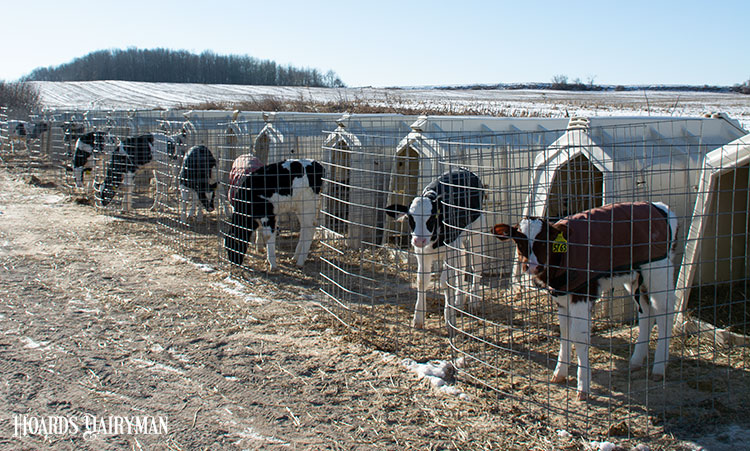
At Synergy Dairy in Pulaski, Wis., Heather Jauquet has a lofty goal for preweaned calves to gain 2.5 pounds per day. In all but the most extreme weather conditions, she said they are able to hit that mark consistently.
Jauquet and her husband, Jay, partnered with her parents in 2004 to establish Synergy Dairy; in 2017, the Jauquets took over sole ownership of the farm, which they operate with help from their three sons, Mason, Carter, and Evan. In a University of Wisconsin Division of Extension “Five Minute Farm Focus” video, Jauquet shared how they are able to achieve such impressive rates of growth in their young calves — and why they believe the cost is justified.
A new barn addition in 2018 allowed the Jauquets to revamp their calving area, and this helps them to manage fresh cows and newborn calves more effectively. In particular, they were able to step up their colostrum processing.
“Through years of experience, we have learned there is no substitute for excellent colostrum management,” she said. Every calf on their farm receives 1 gallon of pasteurized colostrum shortly after birth and another half-gallon 12 hours later. Colostrum is tested with a refractometer to ensure quality.
This careful approach to colostrum quality has paid off. “Since we made colostrum processing a priority, we see very little scours in our calves,” she shared, noting that only 5% of calves scour and most of those calves don’t need any treatment at all except for possibly electrolytes.
Over the years, they also stepped up their calf feeding program, and today, calves receive up to a gallon of pasteurized milk per feeding three times per day.
“It’s a lot of milk, but a lot of our growth comes from that milk,” she explained. Well-grown calves are important to the Jauquets for a few reasons. For one, they do quite a bit of flushing and in vitro fertilization (IVF) work, and she said they have found that calves that get off to a quick start produce higher quality embryos and more of them.
“We also market some calves and show a few as a hobby, so having growthy calves helps in those departments as well,” she added.
To ensure proper rumen development, they learned that a longer, more carefully stepped down weaning process was necessary.
“Our weaning process is three weeks, and we just can’t cut that short,” she explained. That longer weaning window helps ensure calves are eating enough starter to establish good rumen development while maintaining their rate of growth postweaning.
In addition, Jauquet said, “A high plane of nutrition can help a calf overcome many, many challenges.”
A financial analysis of their calf feeding program revealed a cost of $6 per day to feed wet calves. Jauquet said some may be surprised by that number, but she estimates it’s not all that much higher than the average cost on many farms. For them, it is money well spent.
“We feel that investment serves us really well,” she said, adding that it costs them a total of $2,020 per head to raise a calf from birth to freshening.
“Because we know they are going to be the future of the herd, we are willing to make the investment,” she concluded.








